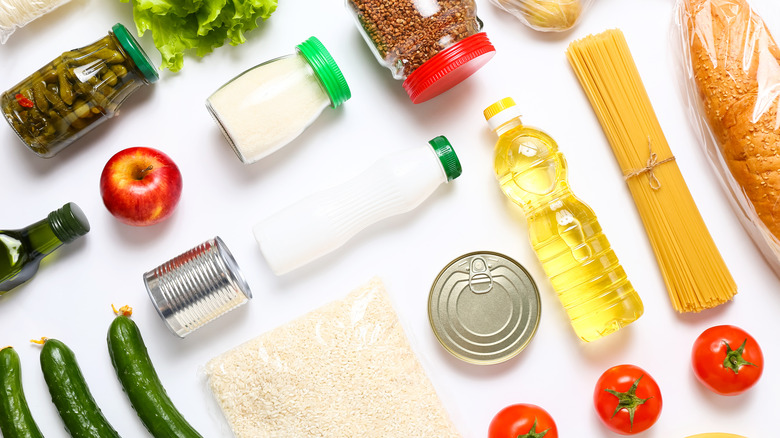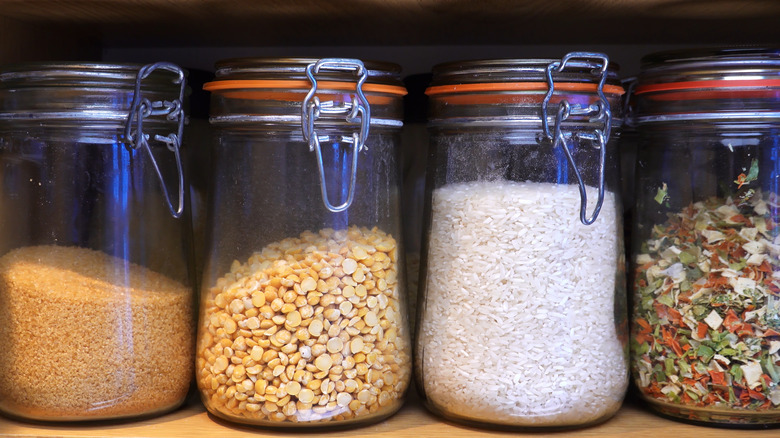This Petition Is Calling Out The FDA Over Toxic Food Packaging Concerns
Even those who are not the most tuned-in to health standards and rules for food packaging have likely seen "BPA-free" stickers or labels on reusable products like water bottles or food storage containers. And with promotional promises like that, chances are you haven't given the chemical much thought after buying your go-to reusable containers. But BPA is in far more food packaging than just reusable items, and there are even higher amounts of the chemical in plastic packaging and lining than you may have ever imagined.
According to The Guardian, the acceptable levels of BPA in the United States are actually 5,000 times higher than that of the European Union. Further, findings by the European Food Safety Authority reveal that even less exposure to BPA can result in harmful effects; the coalition found that the level was actually 100,000 times lower than previously thought (via Food Safety Magazine).
That's why food safety scientists and advocates alike stood behind the Environmental Defense Fund and sent a petition to the Food and Drug Administration pointing out the major mistake and asking for the government agency to restrict BPA levels to safer levels — especially since there are safer materials and alternative options to BPA available.
As The Guardian explains, the chemical is responsible for many serious health risks and repercussions because it wreaks havoc on the endocrine system. Those health risks can result in cancer, reproductive issues, toxicity within the body, Type 2 diabetes. and even cardiovascular issues, according to the Mayo Clinic.
This is how you can lessen BPA risks
While it can take quite some time for the FDA to take action or even issue a response to the Environmental Defense Fund's petition (via The Hill), that doesn't mean those who have concerns over the current levels of BPA cannot take action. Though BPA has been used in products since the 1950s, the Mayo Clinic has several tips for minimizing your exposure to the harmful chemical. The good news is you've likely already been following one recommendation by looking for and buying BPA-free products.
If you're not sure if some of the products you have at home are BPA-free, including the packaging your food is in when you buy it from the grocery store, avoid exposing the packaging to heat. When plastics containing BPA warm up, they tend to release more of the chemical. The Mayo Clinic also suggests skipping canned goods, some of which are still lined with plastic that could contain BPA (as of 2020, about 10% of canned goods still contained BPA, via Insider). Finally, try to use other materials for your food such as glass to minimize the risk of BPA exposure.

